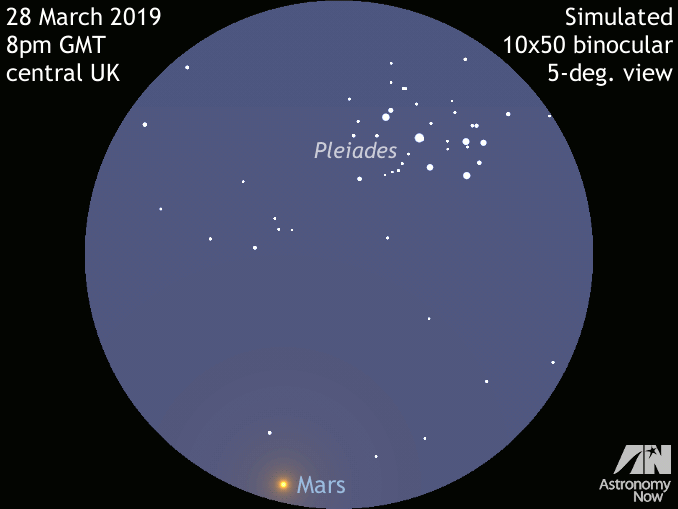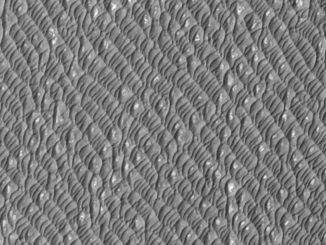
The Red Planet currently lies in the constellation of Taurus about 300 million kilometres distant, hence its magnitude +1.4 gibbous disc measures just 4.6 arcseconds across. This means that a telescopic magnification of 400× is required to enlarge it to the same size as the full Moon appears to the unaided eye, which is why you are unlikely to see any surface features in a typical backyard telescope.
However, there’s one excellent reason that you should follow the motion of Mars as March draws to a close. For five consecutive evenings starting Thursday, 28 March 2019, observers in the British Isles and Western Europe can see the Red Planet and the Pleiades star cluster within the same field of view of typical 10×50 binoculars. To get your best views, look no later than the onset of nautical twilight (about 8pm GMT in the British Isles, or 9pm BST from 31 March when the clocks go forward one hour).
The Pleiades, or Messier 45, are named after the Seven Sisters of Greek mythology. It’s arguably the most beautiful open cluster in the sky and features in star lore throughout the world. Known as Matariki to the New Zealand Māori, their helical rising in May/June traditionally starts the Māori new year. The nine brightest naked eye stars are embedded in blue reflection nebulae (not easily seen visually) and concentrated in a field just over one degree in diameter where typical binoculars will show about one hundred stars. Some 100 million years old, the Pleiades are about 440 light-years from Earth.



